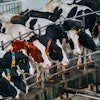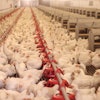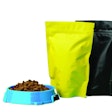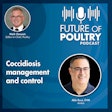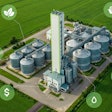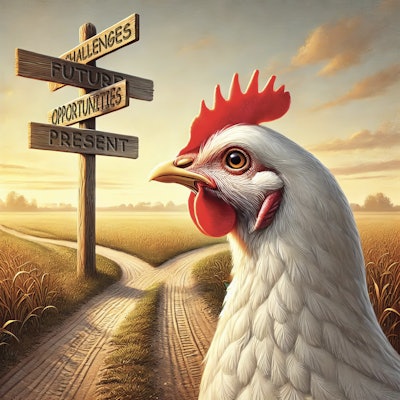
Chicken is the world’s most popular animal protein, and for good reason. It’s affordable, nutritious and widely accepted across cultures and dietary preferences. As of 2022, more than 75 billion chickens were processed for meat each year – an average of approximately 205 million per day, and demand continues to rise.
Why chicken stands out
Few proteins offer the versatility of chicken. It’s a staple in kitchens worldwide, appearing in everything from chicken tikka masala to coq au vin, hot wings to chicken Kiev.
Beyond taste, chicken is a nutritional powerhouse. It’s lean, high in protein and rich in B vitamins, supporting brain and muscle health at every stage of life. The World Health Organization (WHO) recommends chicken as an ideal protein source for children aged 6-23 months, promoting cognitive function and energy. For older adults, it aids muscle maintenance and heart health and is easy to chew and digest. Some studies even suggest that it may reduce the risk of depression and anxiety.
Chicken also plays a vital role in food security. It requires fewer resources than other meats, making it more accessible in emerging markets. Advances in feed efficiency, water use and production efficiencies at the breeder level further reduce its environmental footprint, reinforcing chicken as a sustainable protein choice.
Challenges on the horizon
Despite strong growth, the poultry industry faces significant challenges, particularly avian influenza (AI), geopolitical tensions and public perception.
AI outbreaks continue to disrupt markets, causing shortages and price fluctuations. To mitigate these risks, we must strengthen biosecurity measures and embrace technology. Artificial intelligence, for example, is being integrated into medical diagnostics, enabling earlier disease detection and more accurate diagnoses.
Proven strategies, such as compartmentalization and regionalization, allow healthy flocks to remain in trade during outbreaks. Collaboration is also essential – working with industry associations and governments ensures our interests are represented as we maintain high welfare and safety standards.
Importance of balanced regulation
Government regulations play a crucial role in animal welfare and food safety, but excessive regulation could have unintended consequences. Overly restrictive policies would have the potential to reduce domestic production, leading to increased imports from countries with lower welfare standards.
That’s why science-based, balanced regulations are essential. Our sector supports strong welfare policies that prioritize animal well-being without compromising food security or industry sustainability.
Public perception – telling our story
Misleading information is often spread, creating misconceptions about poultry production. As an industry, we must be transparent in communicating our commitment to welfare, sustainability and responsible production.
We've made substantial investments in research and development, innovation, and resource efficiency, leading to safer, more sustainable food production – an accomplishment we can be proud of as a sector. But we need to do more than make progress – we need to make it known. Engaging the public through social media and other communication channels, correcting false narratives, and highlighting our successes will help ensure poultry’s contributions are recognized and valued.
The road ahead
The Organisation for Economic Co-operation and Development (OECD) and the United Nations Food and Agriculture Organization (FAO) predict continued growth in chicken consumption, with Rabobank forecasting 2.5% to 3% growth in 2025.
Despite challenges, poultry remains the world’s most sustainable and accessible protein. Its affordability, nutritional value and environmental efficiency make it an essential part of the global food system.
Our sector’s future depends on innovation, collaboration and communication. By staying ahead of biosecurity risks, embracing sustainability and working together, we can ensure chicken continues to feed a growing global population for generations to come.
